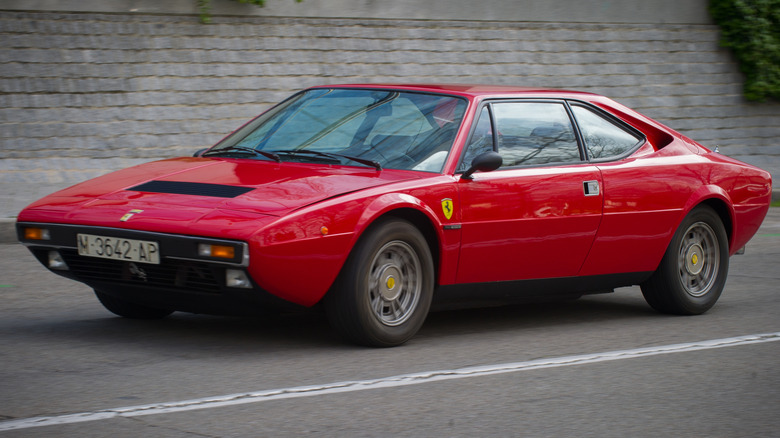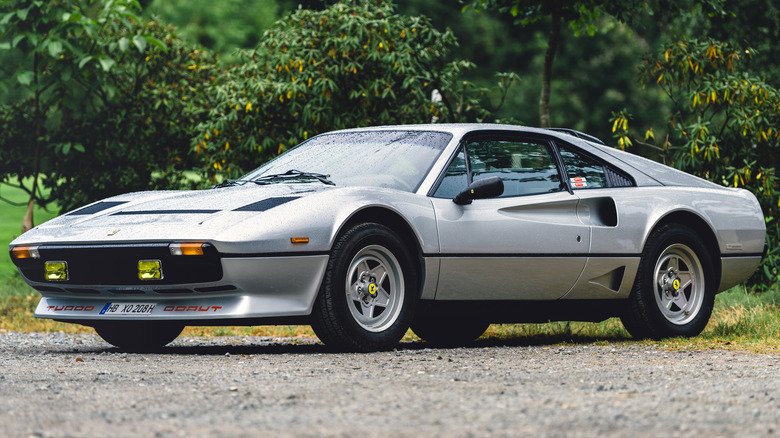The Slowest Modern Ferraris—and What Held Them Back
Every Ferrari model since 1951 has been able to reach at least 120mph. If Ferrari is going to build a slow car, then there must be a reason for it. Looking at why Ferrari would build a car with a lower top speed than its other models tells you something about what Enzo was thinking at the time. Ferrari began setting standards for taste and performance from the beginning of the company, but it also worked the other way around. Regulations, changing styles, the intended use — and the intended buyer — were all in mind.
None of the cars listed below made our list of the greatest Ferraris of all time. This does not mean that they are bad cars or any cheaper than other Ferraris. The main difference lies in that these are the cars that reflect changes, and not those that lead the way for everyone else.
Ferrari 342 America -- 115mph
Ferrari set its reputation on the track in the late 1940s, but the company knew that not all of its clients wanted to drive race cars on the street. Grand Touring (GT) cars with detuned race engines appeared around 1950 to tend to the well-heeled driver who was not a professional race car driver.
One such early car was the 342 America introduced in 1951. Ferrari improved the handling, tamed the four-liter V12 engine, and put in a four-speed transmission. While the car reached 'only' 115mph, it was Ferrari's last model to not reach 120mph. The other models the company introduced in 1951 were faster. Ferrari could have made the 342 America much faster as well: the 340 Mexico race car introduced a year later would reach 175mph with a 4.1-liter V12 and a five-speed transmission.
The 342 America was also the company's first 2+2. By making a four-seater, a corner was turned and in this sense, the modern Ferrari era began.
Ferrari Dino 208 GT4 - 136mph
Ferrari unveiled the Dino series in 1967 with the 206 GT that sported a 1986cc engine. At first, the company intended to position the Dino as its own separate brand, with the marketing brochure proclaiming it 'tiny, brilliant, safe – almost a Ferrari'. After that inauspicious start, the increasingly popular car went through several iterations all keeping a maximum speed of 146mph. Then the Bertone-designed Dino 308 GT4 arrived in 1973 with a top speed of 155mph. This version had a 2926cc V8 mounted mid-section.
Then the last of the Dinos, the 208 GT4, appeared in 1975 as a response to Italy enacting a tax on cars with engines having more than two liters in displacement. The 208 GT4 carried an engine based on the Dino 308 GT4 but with a smaller bore that shrank displacement to 1990cc. Even with a five-speed transmission, the top end dropped to 136mph.
Ferrari 208 GTB and GTS -- 133mph
The Dino 208 GT4 was replaced by a car that was even slower. This was the 208 GTB and 208 GTS. The new 208 and 308 series used the same body, but the 208 sported only a 1990cc engine. As with the last Dino, the smaller engined car was aimed primarily at the Italian market because of the higher taxes on larger displacement engines. Despite having a five-speed transmission, the new 208 series had a top speed of 133mph, making them the slowest Ferraris since 1951.
Production of the 208 GTB and 208 GTS ended in 1982. Ferrari introduced a turbocharged version of the 208 in that year and the top speed rose to 150mph. Other technological advancements such as fuel injection and four valve per cylinder engines raised performance despite increasing pollution restrictions. Ferrari models in the coming years would commonly have top speeds above 150mph and some would reach over 180mph.



